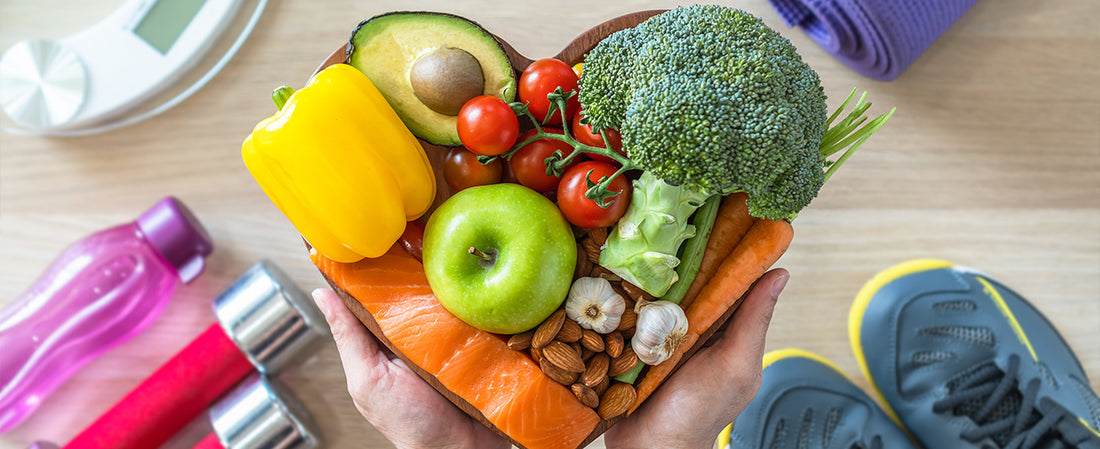Do you agree that we are constantly bombarded by advertising representative of the svelte thin figure? Does it make your self-esteem plummet or are you able to ignore the hype and just be happy in your own skin? Regardless of the pummeling, at some point, we all contemplate a diet. Diet should be a four-letter word that we substitute with ‘food management’ instead, but it doesn’t quite have the same inference.
Coronavirus lockdowns at home have meant the fridge has been more readily available. I’m sure boredom just makes me open it every time I walk past.
Have you already attempted a diet this year? The problem is that most modern diets are too restrictive and we start hankering for the food groups that we are supposedly meant to be avoiding. I’ve now gone for 10 weeks with no biscuits or lollies. As time goes by it is easier to say “no thanks.” I have noticed a difference in my fatigue levels and a piece of chocolate the other day made me feel nauseated. No weight loss though. I think cheese and crackers will be next on the ‘don’t eat’ list before I can begin to reap weight-loss benefits.

There are so many ‘food management’ options available on the internet and thousands of weight loss books to choose from. A Doctor may advocate one diet, while another shakes his head at it. There are diets with yo-yo effects, fad diets and periodic diets. The sheer number makes it difficult to get started and then we question what is the most suitable, sustainable and effective. Trendy diets may not be the best diets; it is up to you to find one that suits. Undeniably, it is the one that you can stick to. Know that to lose weight, you must change your diet and the way you eat.
This is a ‘must-do’ list when managing your diet.
Drink plenty of water and keep your body hydrated.
Eliminate sugar by reading packet labels. Toss out sweets, cakes and breakfast cereal.
Double your intake of fruit and vegetables, because your fibre intake is important.
Exercise if you can. Sport, gym work, walking. Your body works more efficiently when you move the body parts.
Listen to your body and eat when hungry. Abandon habits like a biscuit with your morning cup of coffee. Try not to eat after 7pm.
Consistency. Stick with it.

MEDITERRANEAN DIET:
Mediterranean peoples live longer and suffer less cancer and heart attacks. There is no actual Mediterranean diet per se. Greeks eat differently to Italians or the Spanish and the French, but many of the same principles are shared. They consume a diet low in red meat, sugar and saturated fat, yet high in fruit & vegetables, nuts and seeds, legumes, whole grains, fish, seafood and extra virgin olive oil. Eggs and dairy are eaten in moderation. It’s an approach to cooking that emphasizes vegetables, naturally leading to antioxidants, vitamins, and minerals into your body. At its core, the diet gets back to the basics and relishes eating whole foods.
DASH DIET:
The DASH Diet, which stands for Dietary Approaches to Stop Hypertension, is promoted by the National Heart, Lung, and Blood Institute to do exactly that: stop (or prevent) high blood pressure. Emphasis is on fruit & vegetables, low-fat dairy and whole grains that supply nutrients like potassium, protein and calcium. Recommendations are for specific servings of different food groups. The number of servings you are permitted to eat depends on your daily calorie intake.
FLEXITARIAN DIET:
This is a combination of 2 words. Flexible and vegetarian. The word came about from the 2009 book written by Dawn Jackson Blatner, in which she advocated that you didn’t have to eliminate meat completely to gain the advantages associated with vegetarianism. There is no strict regime. You simply plan meals to target fruit and vegetables, while still eating chicken or a steak now and again. This is less radical than a vegan diet which restricts ALL animal products.
WEIGHT WATCHERS DIET:
Originally set up to achieve weight loss, WW now focuses on inspiring healthy living and well-being, concentrating on eating less and moving more. Weight Watchers still use a Smartpoints system, with food and drinks assigned a value. It doesn’t restrict food groups, but you must eat a meal plan within your daily points limit. Allowing flexibility, it is easy to follow. It remains successful because of the support in social groups gathered together.
MAYO CLINIC DIET:
Mayo Clinic has a unique food pyramid that helps you calibrate your eating habits. They encourage the replacement of bad eating habits with good ones. The pyramid emphasises fruit & vegetables and whole grains. You can eat more with fewer calories because the foods have low energy density.
MIND DIET:
This combines the Dash and Mediterranean diet and zeroes in on foods that explicitly affect brain health. Initial research may suggest eating leafy greens, nuts and berries may lower the incidence of brain disorders. The MIND diet, which stands for Mediterranean-DASH Intervention for Neurodegenerative Delay, was developed by Martha Clare Morris, a nutritional epidemiologist at Rush University Medical Center, through a study funded by the National Institute on Aging and published online February 2015. It was discovered that the diet lowered Alzheimer’s risk by about 35% for people who followed it moderately well and up to 53% for those who adhered to it rigorously.
VOLUMETRICS DIET:
Pioneered by Penn State University nutrition professor Barbara Rolls, Volumetrics is more of an approach to eating than it is a structured diet. With ‘The Ultimate Volumetrics Diet’ book, you’ll learn to decode a food’s energy concentration, thereby making choices that fight hunger. Food is divided into 4 groups and the book is full of helpful recipes. It will help you eat more veggies to keep you full and healthy.
THERAPEUTIC LIFESTYLE CHANGES DIET:
This TLC programme was created by the National Institute of Health’s National Cholesterol Education Program with the goal of cutting cholesterol as part of a heart-healthy eating regimen. Like most diets, it endorses eating plenty of veggies, fruits, breads, cereals, pasta and lean meats. This does give you a lot of latitude with what you eat.
NORDIC DIET:
Nutritional scientists based at the Denmark’s University of Copenhagen teamed up with a co-founder of the world-renowned restaurant Noma for this project on the Nordic Diet. It embraces relaxed social meals, centred on seasonal and local Scandinavian foods. Including more foods from seas and lakes, high-quality meat, fruit & vegetables and whole grains, it is likened to eating like a Viking. The diet advocates home-cooked meals with little waste. The book “The Nordic Way’ adheres to balancing nutritionally dense foods. They have a back-to-nature approach that avoids processed foods.
FASTING:
This is a strategy that combines eating and fasting. You have to restrict the time that you eat. Possibly limit food intake to 500 calories/day or have a certain day of the week When you only drink water. There are research links to anti-aging effects and reduced inflammation. Overall you are consuming fewer calories, but don’t fall into the trap of consuming more when you complete the fast.
LOW-CARB DIET:
Considered to be the most popular diet for weight loss and includes such examples as the Atkins Diet. Check out the best-selling book written by Dr Robert C. Atkins. It works by restricting your carbohydrate intake and favouring protein and fat. Typically high in protein, so that it raises your metabolism., this diet makes your body use fatty acids for energy by converting them into ketones. Over the past decade, numerous studies have shown that low-carb diets are effective for weight loss, with additional health benefits, such as great improvements in blood sugar levels. The effectiveness is attributed to reduced carbs and increased protein leading to reduced appetite.
THE PALEO DIET:
Based on the hunter-gatherer theory of what our ancestors supposedly ate, Paleo concentrates on eating whole foods, fruits, vegetables, lean meats, nuts, and seeds, at the same time confining the consumption of processed foods and sugar.
LOW-FAT DIET:
Just like low-carb diets, low-fat diets have been prevalent for decades. Essentially the diet reduces the fat intake to be less than one third of your daily calories. The food is mainly plant-based with a limit on animal products.
KETO DIET:
Originally designed as a form of treatment for epilepsy, the ketogenic diet manipulates the body into ketosis, but to do this you must heavily restrict all sources of protein and carbohydrates. This is not a long-term way of eating food. Your brain needs carbs to function and when you cut carbs, you will be affecting other body regions. But the diet does eliminate sugars.
THE RAW FOOD DIET:
Just as it says, you eat your fruit and vegetables uncooked, with a plant-based diet. I can vouch for my daughter’s broccoli salad. See the recipe below. A food is considered raw if not refined, pasteurised or treated with pesticides. It is a very particular diet that allows for juicing, blending, dehydrating, soaking and sprouting. Similar to veganism, the raw food diet is usually made up mostly of fruits, vegetables, nuts and seeds. Some people eat raw fish and meat and also consume raw eggs and dairy.
So, this is a list of some of the more popular diets/food management plans. You can research them all on the internet. I have not included diets such as Noom, Endomorph, Sirtfood or Dubrow as they establish the necessity of eating the same types of food groups as all of the above. Check out diets that are supported by science and that can be managed with your budget.
There is no such thing as the ‘abstain’ diet because we all must eat to stay alive. But certainly, curb feasting on take-away food, sugar, processed foods and overconsumption of alcohol.
And the one common theme running through all diets is to eat plenty of fresh fruit and vegetables. Good luck with your choice.

Broccoli Salad.
• A stalk of broccoli and cut the florets into small pieces
• 4 1/2 cup cooked bacon rasher bits
• 3 spring onions, diced
• ½ c. almond slivers
• ½ red onion, finely diced
Mix together 1 cup of your usual egg mayonnaise. Add 1 tbsp of cider vinegar, 1 tbsp of extra virgin olive oil, 1 tsp of honey, a dash of Dijon mustard and a shake of salt & pepper. Taste and add more, or less, of the ingredients to your tastebuds desire.
Mix in the vegies, bacon and slivers, coating them generously with the dressing. This salad tastes best the next day when marinade has taken place and the broccoli has absorbed the dressing flavours.
You could also add walnuts or cranberries or capsicum. Experiment with your favourite flavours.










